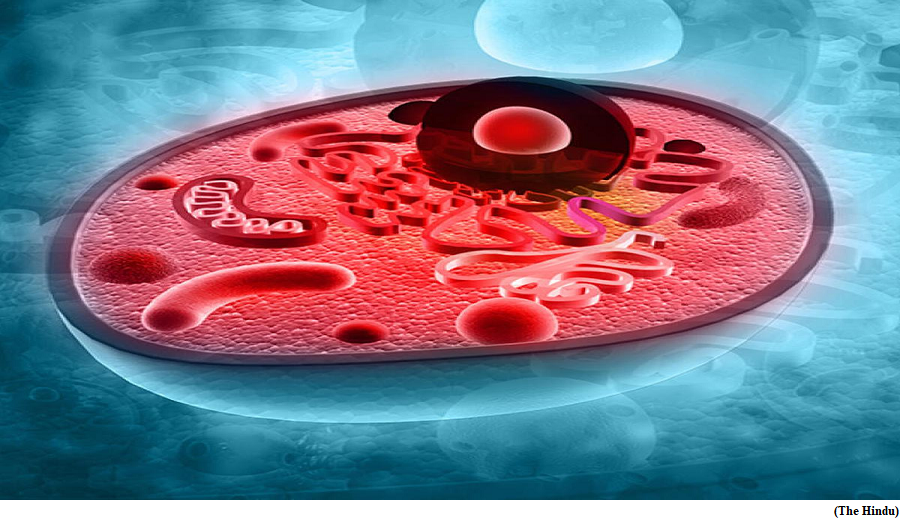Can land restoration protect the earth? (GS Paper 3, Environment)

Why in news?
- Humans have breached four out of nine planetary boundaries, the second edition of the Global Land Outlook report, published recently has reported.
- It was prepared by the United Nations Convention to Combat Desertification (UNCCD) and its partners and draws attention to the depletion of finite land resources and the need to urgently restore the world’s land.
What are planetary boundaries?
- Planetary boundaries are the thresholds of environmental limits that define a “safe operating space for humanity”. The nine planetary boundaries are:
- Biodiversity loss
- Land-use change
- Climate change
- Nitrogen and phosphorus (geochemical) cycles
- Freshwater use
- Ocean acidification
- Chemical pollution
- Atmospheric loading
- Ozone depletion
- Of these, climate change, biodiversity loss, land-use change, and geochemical cycles have already been exceeded.
- According to the Global Land Outlook report, these breaches are directly linked to human-induced desertification, land degradation, and drought.
Can land restoration help the earth?
- The report defines land restoration as “a continuum of activities that avoid, reduce, and reverse land degradation with the explicit objective of meeting human needs and improving biosphere stewardship”.
- Avoiding degradation means eliminating practices that degrade the environment, ranging from land and ecosystem conversion to socio-economic inequalities.
- Land degradation can be reduced by adopting sustainable land and water management practices, while reversing land degradation involves revitalising soil, watersheds, and other elements of natural ecosystems as well as improving livelihoods and preparing for future challenges, with the eventual goal of sustaining all life forms on the planet.
- Land is the operative link between biodiversity loss and climate change, which means restoring land is crucial to solving interconnected crises.
Land degradation neutrality:
- Experts believe that effective land restoration, coupled with efforts to meet future needs, is essential to recover from the current crises and move towards an equitable and sustainable future.
- The global annual cost of land restoration to achieve meaningful results is expected to become at least $300 billion by 2030. Each dollar invested in restoration activities has also been estimated to return between $7 and $30 in economic benefits.
- The U.N. General Assembly believes that achieving ‘land degradation neutrality’ is an effective way to accelerate progress towards achieving Sustainable Development Goals by 2030.
- The UNCCD defines ‘land degradation neutrality’ as “a state whereby the amount and quality of land resources necessary to support ecosystem functions and services and enhance food security remain stable or increase within specified temporal and spatial scales and ecosystems”.
Food systems and land degradation:
- Agriculture has affected the earth more than any other human activity.
- It is not only the practice of growing food crops but also related activities like the production of animal feed, soil and water degradation, loss of forested land, and maintaining supply chains that connect producers to consumers.
- Worldwide, food systems are responsible for 80% of deforestation, and 70% of freshwater use, and are the single greatest cause of terrestrial biodiversity loss. The threats do not end here.
- Land degradation, desertification, and drought pose a great risk to global food security as well. Restoring long-term healthy practices and productivity within our agricultural practices will be the key to switch to sustainability in global food systems.
Achieving land restoration:
- In most cases, land restoration activities are the same as those required to prepare for future land challenges, like tackling drought, recovering soil health, etc.
- Floods, drought and wildfire are some common environmental challenges that degrade land.
- Integrated land use planning; identifying the best combination of land uses while both sustainably meeting the needs of the stakeholders as well as preserving the land resources is an efficient way to address land degradation.
- A cost-effective approach is to identify landscapes while maximising benefits, such as in global restoration hotspots.
- Regenerative agricultural practices, like terrace farming and rainwater harvesting, help restore land and can potentially increase crop yields while reducing greenhouse gas emissions and sequestering atmospheric carbon. They also create meaningful livelihoods, boost income, and ensure availability of resources in a healthy climate.
Way Forward:
- Land and ecosystem restoration will help slow global warming and reduce the scale and frequency of disasters like droughts, floods, etc.
- Inclusive and responsible governance is also crucial to facilitate the shift to sustainable land use and management practices, per the report.
- It characterised land restoration as a shared responsibility, and that governments, scientists, civil society, and private sector players need to work together to set land and ecosystem restoration goals that transform land-use systems.
FDA approves first vaccine for respiratory syncytial virus
(GS Paper 2, Health)
Why in news?
- Recently, the Food and Drug Administration (FDA) approved the first vaccine; Arexvy for respiratory syncytial virus (RSV) to lower respiratory tract disease in people older than 60 years.
- This is the first RSV vaccine to be approved anywhere in the world.

Success in phase-3 trial:
- The vaccine is manufactured by the company, GSK, and the FDA approval was based on a phase-3 trial carried out on nearly 25,000 participants.
- About 12,500 participants received one dose of the vaccine, while the remaining participants received a placebo.
- The trail showed that a single dose of the vaccine reduced the risk of people, older than 60 years, developing lower respiratory tract disease caused by the RSV virus by 82.6% and reduced the risk of developing severe disease by 94.1%.
Comorbidities:
- According to the U.S. Centres for Disease Control and Prevention, lower respiratory tract disease caused by the RSV virus leads to approximately 60,000-1,20,000 hospitalisations and 6,000-10,000 deaths among adults who are 65 years of age and older.
- The RSV virus significantly affects older adults with comorbidities. Like the common cold, the RSV usually causes mild symptoms but can turn deadly if it infects older people.
- Besides older adults, infants too are at high risk from RSV.
Other vaccines:
- Two more vaccines for RSV by Pfizer and Moderna have already completed clinical trials on adults older than 60 years and may soon be approved by the FDA.
- While the vaccine developed by Pfizer is protein-based, Moderna has used mRNA technology, like in the case of the SARS-CoV-2 vaccine, to develop the RSV vaccine.
- GSK is also testing the vaccine in adults aged 50-59 years, including participants with underlying comorbidities. The results are expected by the end of 2023.
Way Forward:
- The vaccine will be available for older adults in the U.S. before the 2023-2024 RSV season, which typically starts ahead of the winter months.
Scientists help find new kind of molecular motor
(GS Paper 3, Science and Technology)
Why in news?
- An international team of researchers, including from the National Centre for Biological Sciences (NCBS), Bengaluru, has reported a new kind of molecular motor.
- The finding opens the door to previously unanticipated cellular processes and potential applications in biology and medicine.
Role of molecular motors:
- Each cell in the body is a complex soup of electrochemical reactions that produce energy, but they are not enough.
- Cells also need to move things, such as pull two organelles together, move cargo towards and away from the nucleus, and power the movement of subcellular molecules. Many of these actions are driven by molecular motors, which use biochemical energy to do mechanical work.
How EEA1 resume its rigid shape?
- Earlier researchers from Australia and Germany reported that when an enzyme called Rab5 binds to a long protein called EEA1, the protein loses its taut and rigid shape and becomes floppy. This ‘collapse’ pulls two membranes inside a cell closer to each other.
- In the new study, researchers have reported that EEA1 regains its rigid shape in another mechanism so that it can become floppy again to pull the membranes closer, creating a new kind of two-part molecular motor.
- Earlier, it was unclear whether EEA1 could resume its rigid shape, so that the whole process could repeat itself without the help of other proteins.
- The researchers reasoned that it had to resume its stiffer shape because EEA1 works on thousands of membranes, and creating a molecule as big as the protein for every membrane pair would be wasteful. At more than 200 nm, EEA is more than 100x longer than typical proteins.
GTP hydrolysis:
- The researchers reported that EEA1 draws energy from a reaction called GTP hydrolysis to become rigid again. The GTP hydrolysis is mediated by enzymes called GTPases. Rab5 is one such.
- The motor does not produce a lever-like back-and-forth action, as most motors do, but allows a molecule to change its flexibility between two states. Also, most molecular motors get their energy from another molecule called ATP, whereas the Rab5-EEA1 motor uses GTP.
- EEA1 can have one of several trillion shapes when it is floppy, but it can have only one (rod-like) shape when it is stiff. The floppy state has more entropy and is “entropically favoured”. So when it goes from stiff to floppy, it exerts an entropic force on the membranes that it pulls.
Way Forward:
- Aside from throwing light on membrane fusion by EEA1, the study also provides a general mechanism applicable for many such mechano-chemical proteins or assemblies which harness the chemical energy of nucleotide hydrolysis for mechanical work in the cell.





